- Home
- Umberto Eco
On the Shoulders of Giants Page 2
On the Shoulders of Giants Read online
Page 2
A very frequent topos in the Middle Ages argued that the ancients were taller and better looking, a position that would be completely untenable today: we need only look at the length of the beds Napoleon slept in. But in those days, perhaps, it was not entirely unreasonable, not only because the image people had of antiquity derived from commemorative statuary, whose sculptors added many centimeters to their subjects’ heights, but also because the fall of the Roman Empire had been followed by centuries of famine and depopulation. Those towering crusaders and knights of the Holy Grail we see in contemporary cinema were very likely much shorter than their equivalents of our day. Alexander the Great (326–323 BCE) was notoriously short, but Vercingetorix (82–46 BCE) was probably taller than King Arthur (480–550 CE). For the sake of symmetrical contrast, another topos, frequently found in the Bible and through late antiquity and beyond, was that of the puer senilis, a youngster who, along with the virtues of youth, had all those typical of the old man. Eulogizing the stature of the ancients may seem a conservative foible, and the model of the senilis in iuvene prudentia (elderly and young wisdom combined) celebrated by Apuleius (Florida IX, 38) may seem to favor the novel. But this is not the case. Praise of the ancients was a way for innovators to justify their modern ways as approaches drawing on traditions their fathers had forgotten.
Apart from the few cases mentioned, Dante’s arrogance above all, in the Middle Ages, people assumed that the truth of things lay in the extent to which they were backed up by an earlier authority. If it was suspected that the authority in question did not really support the new idea, his writings were promptly manipulated until they did. “Authority has a nose of wax,” Alain de Lille noted in the twelfth century: “it can be twisted in different ways.”
We must try to grasp this point because, from Descartes on, a philosopher was one who wiped the slate of previous knowledge clean and—as Jacques Maritain said—presented himself as a débutant dans l’absolu (absolute beginner). Any thinkers of our day (not to mention any poets, novelists, or painters) who want to be taken seriously must somehow show that they are saying something different from their immediate predecessors, or if they are not doing so, they must pretend that they are. Well, the Scholastics did exactly the opposite. They committed their most dramatic patricides, so to speak, by claiming and trying to show that they were only restating what their fathers had said. Considering the times he lived in, Thomas Aquinas revolutionized Christian philosophy, but he would have promptly replied to anyone who criticized him (and some did) that he was only repeating what St. Augustine had taught eight and a half centuries before him. This was neither mendacious nor hypocritical. The medieval thinker simply believed it was right to correct the opinions of his predecessors here and there when, thanks to them, he thought he had a clearer idea. Which brings us to the aphorism that inspired the title of this address, that of the dwarfs and giants. The philosopher John of Salisbury gives this account of where it started:
Dicebat Bernardus Carnotensis nos esse quasi nanos gigantium humeris insidentes, ut possimus plura eis et remotiora videre, non utique proprii visus acumine, aut eminentia corporis, sed quia in altum subvehimur et extollimur magnitudine gigantes.
(Bernard of Chartres used to say that we are like dwarfs standing on the shoulders of giants, and so we can see farther than they, not because of our sharper sight or greater stature but because we have been raised higher by their great size.)
To explore the medieval period origins of this aphorism, you might like to track down a copy of Édouard Jeauneau’s 1969 book Nani sulle spalle di giganti, but a more joyously crazy and exciting romp is On the Shoulders of Giants, published in 1965 by one of the greatest contemporary sociologists, Robert Merton. Merton was quite taken by the way Isaac Newton expressed the thought in a letter to Robert Hooke, dated 1675: “If I have seen further it is by standing on ye sholders of Giants.” Merton started tracing the history of the aphorism, and his book documents its vicissitudes with a series of erudite divagations that grew from edition to edition as he added notes and other material. Having published an Italian edition (titled Sulle spalle dei giganti, 1991) and having been so good as to ask me to write an introduction, he reissued it in English in 1993 as “the post-Italianate edition.”
When John of Salisbury, in his Metalogicon (3.4), credited Bernard of Chartres with the dwarfs and giants metaphor, it was the twelfth century. Bernard may not have felt he invented it, however, because the concept (if not the image of the dwarfs) was contained in the monumental exposition of grammar produced by Priscian six centuries earlier which served as the standard work for teaching Latin—and, just thirty-six years before John of Salisbury, an intermediary voice, William of Conches, had talked of dwarfs and giants in his Commentaries on Priscian. But what interests us is that, after John of Salisbury, the aphorism was picked up pretty much all over: in 1160 it appears in a text attributed to the school of Laon; around 1185 it was used by the Danish historian Sven Aagesen, then by Gerard of Cambrai, Raoul de Longchamp, Gilles de Corbeil, and Gerard of Auvergne; and in the fourteenth century, Alexandre Ricat, physician to the kings of Aragon, invoked it again. It cropped up two centuries later in the works of Ambroise Paré, again in those of seventeenth-century scientist Daniel Sennert, and then in Newton. Tullio Gregory notes a use of the aphorism by the seventeenth-century philosopher Gassendi (Scetticismo ed empirismo: Studio su Gassendi, 1961), and the line extends to José Ortega y Gasset, who in his 1947 essay “Entorno a Galileo” writes that men stand “on one another’s shoulders, and he who is highest enjoys the impression of dominating the others, but he should feel at the same time that he is their prisoner.” On the other hand, in Jeremy Rifkin’s 1980 book Entropy, I find a quotation from anthropologist Max Gluckman, who defines a science as “any discipline in which the fool of this generation can go beyond the point reached by the genius of the last generation.” Eight centuries divide this quotation from that attributed to Bernard, and note what has happened along the way: a saying that referred to the relationship with the fathers in philosophy and theology has become a saying that marks the progressive nature of science.
At the time of its medieval origin the aphorism became popular because it offered a way to resolve generational conflict in an apparently non-revolutionary way. The ancients are certainly giants compared to us, but although we are mere dwarfs seated on their shoulders ready to take advantage of their wisdom, we can see better than they. Was this statement originally humble, or was it proud? Did it mean to say that we merely know, albeit a little better, what the ancients taught us—or that, acknowledging our debt to the ancients, we know far more than they?
Since one of the recurring themes in medieval culture is the progressive senescence of the world (mundus senescit), one might interpret Bernard of Chartres’s aphorism to mean that we younger ones are aging with respect to the ancients, but at least, thanks to them, we can understand and do a bit more than they managed to understand or do. Bernard made use of his metaphor in the context of a debate on grammar, engaging with the concept of knowledge and whether the style of the ancients should be imitated. But, according to John of Salisbury, Bernard criticized those pupils who slavishly copied the ancients, saying that the point was not to write like them but to learn from them how to write well; he thought that people in the future should be inspired by his pupils as the pupils themselves had been inspired by the ancients. It might not have been in terms we would use today, but Bernard’s aphorism contained a call for autonomy and the courage to innovate.
The aphorism said that “we can see farther” than the ancients. The metaphor is clearly a spatial one, implying a march toward a horizon. We should not forget that the concept of history as a progressive movement toward a better future is an invention of the Fathers of the Church—as in, from creation to redemption and then to the coming of Christ triumphant. Whether we like it or not, without Christianity (albeit with Jewish messianism behind it) neither Hegel nor Marx would have been able to t
alk about what the Italian poet Leopardi saw skeptically as “magnificent and progressive fate.”
Again, use of the dwarfs and giants metaphor takes off in the early twelfth century. Only a century before, a key debate had finally subsided, one that had run through the Christian world from the first interpretations of the Book of Revelation to the terrors of the year 1000. Millenarianism—that neurotic expectation of the end of days—had been an idea that had grown up through an extensive millenarian literature and in many more or less subterranean schools of heretical thought. Certainly legendary as far as mass movements are concerned, it was still an active inheritance of many heretical movements at the time that the aphorism was coined, but it had disappeared from orthodox debate. The movement was toward a final parousia (Second Coming of Christ), but it became the ideal end to a story seen as a positive one. The dwarfs were a symbol of this march to the future.
The medieval appearance of the dwarfs marked the beginning of the history of modernity as innovation that involves rediscovering models forgotten by the fathers. Let us take, for example, the curious situation of the first humanists, and of philosophers like Marsilio Ficino and Pico della Mirandola. They were the leading lights—as we were told at school—in a battle against the medieval world, and it was more or less in this period that the word gothic appeared, with not entirely favorable connotations. Yet what did Renaissance Platonism do? It set Plato against Aristotle, discovered the Corpus Hermeticum or the Chaldean Oracles, and built a new knowledge upon an ancient wisdom that antedated Jesus Christ. Humanism and the Renaissance were cultural movements commonly seen as revolutionary, but their strategy was one of the most reactionary coups de main ever, if we define reactionary as a return to an atemporal tradition. So we are witness here to a patricide that eliminates the fathers by turning to the grandfathers; it was from the latter’s shoulders that they attempted to advance the Renaissance vision of man as the center of the cosmos.
It was probably with seventeenth-century science that western culture succeeded in standing the world on its head, thereby truly revolutionizing knowledge. But the starting point of that science, the Copernican hypothesis, referred back to the thinking of Plato and Pythagoras. When the Jesuits of the Baroque period tried to counter the Copernican model by constructing an alternative modernity their opposition took the form of rediscovering the ancient writings and civilizations of the Far East. Isaac de la Peyrère, an out-and-out heretic, tried to show (by killing off biblical chronology) that the world began long before Adam, in the China seas, and consequently that the Incarnation was merely a secondary episode in the history of our world. Giambattista Vico saw all of human history as a process that takes us from the giants of the past to the point of finally being able to reflect with clear minds. The Enlightenment saw itself as radically modern, and as a side effect it really did kill its own father, with Louis Capet serving as physical proxy. But here, too—just read the Encyclopédie—frequent reference was made to the giants of the past. Even as the Encyclopédie celebrates the new manufacturing industry by including woodcuts illustrating a wide variety of machines, it is not above printing “revisionist” articles (in the sense that, like an energetic dwarf, it reinterprets history) in which ancient doctrines are revisited.
The great Copernican revolutions of the nineteenth century always refer to previous giants. Kant needs Hume to awaken him from his dogmatic slumbers; the Romantics engage with the Storm by rediscovering the mists and castles of the Middle Ages; Hegel explicitly sanctions the primacy of the new over the old, seeing history as a perfective movement without waste and nostalgia; Marx, reinterpreting human history in its entirety, works out his materialism starting with the Greek atomists, the subjects of his degree thesis; Darwin kills off his biblical parents by making giants of the great anthropomorphic apes, on whose shoulders men came down from the trees to manage, still full of wonder and ferocity, that marvel of evolution that is the opposable thumb. The second half of the nineteenth century witnessed a movement of artistic innovation that was almost entirely a reappropriation of the past, from the Pre-Raphaelites to the decadents. The rediscovery of remote fathers served as a rebellion against the actual fathers, who had been corrupted by mechanical looms. And Carducci, who made himself the herald of modernity with his “Hymn to Satan,” continually sought inspiration and ideals in the myths of Italy’s earliest “commune” city-states.
The historic avant-garde of the early twentieth century represents a peak expression of this parricide by modernism, which claims to free itself of all homage to the past. This is the speed-smitten Marinetti calling the racing car more beautiful than the Victory of Samothrace; the futurists’ slogan of “down with moonlight”; their glorification of war as the world’s only hygiene; the cubists’ fracturing of forms; the progression from abstraction to blank canvas; the substitution of music with noise, or with silence, or at most with the tonal scale; the architects’ “curtain wall” that does not dominate but absorbs the environment, and buildings as steles, pure parallelepipeds, minimalist art; and in literature, the destruction of the flow of discourse and narrative tenses, the Burroughs-like collage and blank page. Yet here, too, as the new giants reject the legacy of the old giants, the dwarf’s deference also asserts itself. I am not speaking here so much of a Marinetti, who would later atone for murdering the moonlight by becoming a member of the Accademia d’Italia—a body that had a considerable affection for moonlight—but of a Picasso, who only began to disfigure the human face after meditating on classical and Renaissance models, and who ended up revisiting ancient minotaurs. Duchamp stuck a moustache on the Mona Lisa, but first needed a Mona Lisa to stick the moustache on. Magritte, to deny that he was painting a pipe, had to go to the effort of meticulously painting a realistic pipe. Finally, the great parricide of the novel’s historic body was committed by James Joyce—who took the Homeric narrative form as his model. Even the ultramodern Ulysses sailed farther thanks to the shoulders, or in this case the mainmast, of an ancient tradition.
This brings us to postmodernism. Postmodern is an all-purpose term, which can be applied to many—perhaps too many—things. But the various activities we describe as postmodern are all reacting, perhaps unconsciously, to a shared concern. Nietzsche names it in the second of his Untimely Meditations (“On the Use and Abuse of History”), where he denounces our excess of historical awareness. If the oppressive influence of this awareness cannot be eliminated even by the revolutionary activities of the avant-garde, the postmodern stance is that we might as well accept the past, revisit it as a form of apparent tribute, and reconsider it from the distance permitted us by irony.
The last episode of generational rebellion I will offer is a clear example of protest on the part of the “new” youth against adult society, coming from those young people who warned one another not to trust anyone over thirty. This was 1968. Setting aside the American flower children, who drew inspiration from Herbert Marcuse’s writings, the slogans chanted during Italian demonstrations (Viva Marx!, Viva Lenin!, Viva Mao Tse-tung!) tell us just how much the rebellion needed to summon earlier giants to fight the betrayal of their immediate fathers on the parliamentary left. There was even a comeback for the puer senilis, seen in the iconic figure of Che Guevara, who died young but was transformed by death into the bearer of all ancient virtues.
But something has happened between 1968 and today. This can be seen when we look closely at a phenomenon that some, superficially, see as the new 1968. I am referring to today’s anti-globalization movement. While the press often gives most visibility to this movement’s younger members, they are not the entire movement; it includes even elderly prelates. The year 1968 was a true generational phenomenon, even if a few adult misfits did adapt by abandoning ties and donning sweaters, throwing away their razors and opting for a liberating proliferation of hair. The old slogan had it that no one over thirty was to be trusted. But the anti-globalization movement is led by mature adults like José Bové and veterans of
other revolutions. It does not represent a clash between generations, or even between innovation and tradition—otherwise, one would have to cast the technocrats of globalization (equally superficially) as the innovators, and see the demonstrators as merely laudatores temporis acti with Luddite propensities. What is happening from Seattle to Genoa on the occasion of the G8 conference in 2001 certainly represents a new form of political struggle, but this struggle is wholly transversal with regard to both generations and ideologies. It contains two opposing aspirations, two visions of the world’s destiny, I would like to say two forces, one based on possession of the means of production and the other based on the invention of new means of communication. In the battle between the globalizers and their antagonists, young and old are equally distributed, and the rampant thirty-year-olds of the new economy are lined up against the thirty-year-olds of the left-wing social centers, each camp backed by older sympathizers.
The fact is that in the thirty-odd years between 1968 and the battle of the G8, a process begun many years before came to fruition. Let’s try to understand its internal mechanism. For a dialectic between fathers and sons to be established, it must always be the case that a strong paternal model exists, and the provocation of the son also has to be so strong that the father cannot accept it, and nor can the father accept the resurrection of forgotten giants. The new poets cannot be accepted quia nuper, as Horace puts it; in his time, the vernacular was unacceptable to the pompous Latinists of the universities. Aquinas and Bonaventure innovated in the hope that no one would notice, but enemies of the mendicant orders, in the University of Paris, spotted this and tried to have their teachings banned. And so it went, all the way down to Marinetti’s racing car, which could be held up as superior to the Victory of Samothrace because and only because his elders saw motor cars as heaps of snarling scrap iron.

 Baudolino
Baudolino The Name of the Rose
The Name of the Rose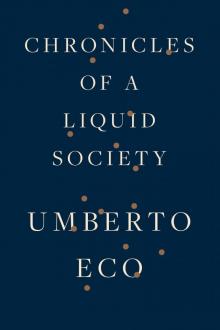 Chronicles of a Liquid Society
Chronicles of a Liquid Society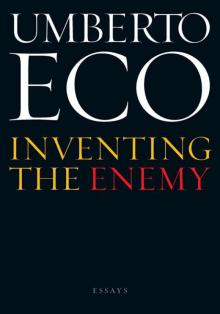 Inventing the Enemy: Essays
Inventing the Enemy: Essays Foucault's Pendulum
Foucault's Pendulum How to Travel With a Salmon & Other Essays
How to Travel With a Salmon & Other Essays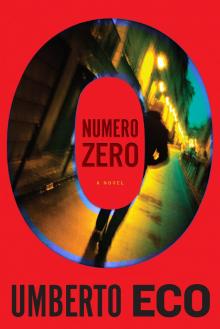 Numero zero
Numero zero The Island of the Day Before
The Island of the Day Before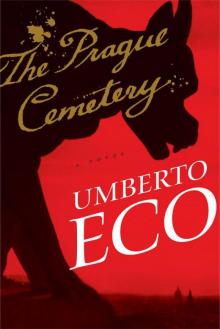 UMBERTO ECO : THE PRAGUE CEMETERY
UMBERTO ECO : THE PRAGUE CEMETERY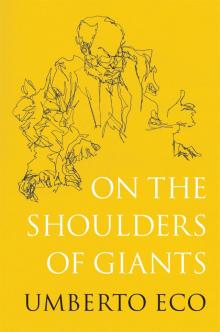 On the Shoulders of Giants
On the Shoulders of Giants Misreadings
Misreadings Six Walks in the Fictional Woods
Six Walks in the Fictional Woods The Mysterious Flame Of Queen Loana
The Mysterious Flame Of Queen Loana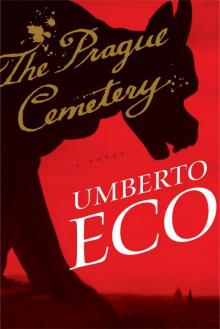 The Prague Cemetery
The Prague Cemetery On Literature
On Literature Lost structure
Lost structure